Biases and Misconceptions – Bisexuality/Pansexuality (Visibility in the workplace)
Why is it important to be able to bring your whole self to work?
Internal battles, specifically trying to come to terms with your sexual identity, is a tiring and lengthy process. Sometimes, it’s one that sees no end.
These battles can be ongoing for weeks, months, years, even a lifetime – it’s an incredibly laborious and draining time for your mental wellbeing, so ensuring that you’re in the right environment, and surrounded by people who allow you to be unequivocally yourself, is beyond high-importance.
A regular working week is usually anywhere between 35-50 hours. A week has exactly 168 hours in it. Therefore, work takes up to 30% of your week (you’re also sleeping for 20%!) What’s left? 50%. Imagine only being YOU for 50% of your time.
Masking your identity in work can come into play for several reasons- uneducated colleagues, boisterous comments, no active support for LGBTQ members, not feeling safe, no pillars, no internal advocates, a corporate workplace, etc.
10% of the world’s population identifies within LGBTQ society in some capacity, so think about your office and how many might be struggling in silence! Allies, quiet or not, are still allies. The best and most unrivaled support anyone can give is to simply educate themselves and be proactive in reinforcing an inclusive working environment.
I, myself, fit into the “B” (Bisexuality) category, or “P” (Pansexuality, but that doesn’t get its own letter). I wanted to share my experience and make a conscientious effort to help others understand Bisexuality and Pansexuality, erase any biphobia, and help educate on the importance of asking the right questions.
What are the right questions to ask? All of them. In my opinion, any question you have should be welcomed with open ears, with the right tone and intention, as any query or concern you have is valid. In my case, it took me a long enough time to figure out that I was a valid Bisexual (even in a heteronormative relationship) so it’s a very gratifying experience to be able to answer questions that can help validate someone else’s journey or simply educate others.
Bisexuality and Pansexuality – what do they mean? By definition, bisexuality is the attraction to both men and women, respectively, whereas Pansexuality is the attraction to a person regardless of their gender or sexual orientation (and it most definitely is not the attraction to pans- the kitchen utensil...) The difference? Pansexuality, on paper, is more gender inclusive, a modern piece of terminology for those that wouldn’t conform to the old norms of bisexuality.
That being said, in my case, it depends on who I’m having the conversation with. I have spoken with many individuals who don’t understand the need for furthermore “confusing” labels. For them, bisexuality is confusing enough! How can one person possibly like both men and women- it’s just greedy!
The main misconception between both Bisexuality and Pansexuality is that bisexuality is less of an umbrella term and is not as gender-conforming as Pansexuality. On paper, Pansexuality is more fluid, but there has also been a push on using Bi+ to emphasize that Bisexuality is a larger encompassing term. However, the beauty of both, once understood, is that they can be used interchangeably.
The crucial thing to remember is that sexuality is not linear, and neither is the terminology or the path to finding out who you are – it’s a spectrum and there will always be people who don’t understand the need for inclusivity, but the truth is if it helps people feel more at one with themselves and who they are, what does it matter?
Your job, our job, is to share our stories and struggles and to create open conversations at work, as it will, eventually, lead to a place where you don’t need to ‘come out’ or ‘announce’ who you are.
Some actions you can take to allow your workplace to be more inclusive could be to:
Start a pillar- an internal LGBT society, meet every week, an open and safe space to share your thoughts and feeling
Plan internal workshops- get speakers in who can assist with educating on LGBTQ matters
Partner with charities- here at Trinnovo we partner with the wonderful (https://teni.ie/)
Host events- we hosted a wonderful Pride networking event in June surrounding the importance of Authenticity at work (https://www.youtube.com/watch?v=eqsv7pKE_6w)
Have open conversations!- having a conversation with a somewhat “controversial” topic can help end the stigma
Some important links:
Ireland
HSE – Mental health and LGBT:https://www2.hse.ie/wellbeing/mental-health/lgbti-sexual-identity-and-orientation.html?gclid=CjwKCAjwsMGYBhAEEiwAGUXJaelLyA-4tjk2tnfv_01x-WEoAXKSor0iNnRunqCH6rR_FTixJ3H1_RoCzdsQAvD_BwE&gclsrc=aw.ds
LGBTQ Ireland: https://lgbt.ie/
List of LGBTQ charities:https://gcn.ie/lgbt-charities-ireland/
Support lines: https://www.belongto.org/youngpeople/help/#:~:text=Here's%20how%20the%20support%20service,anytime%20when%20you%20need%20support
UK
LGBTQ Support groups:https://www.mind.org.uk/information-support/tips-for-everyday-living/lgbtiqplus-mental-health/useful-contacts/
Inclusive charities and organisations:https://www.stonewall.org.uk/help-advice/information-and-resources/lgbtq-inclusive-organisations-you-should-know-about

